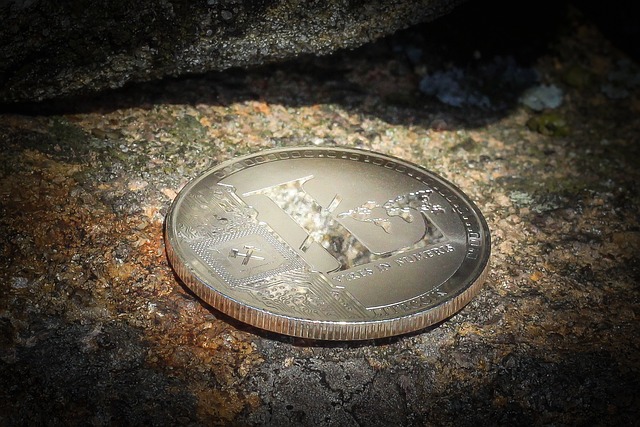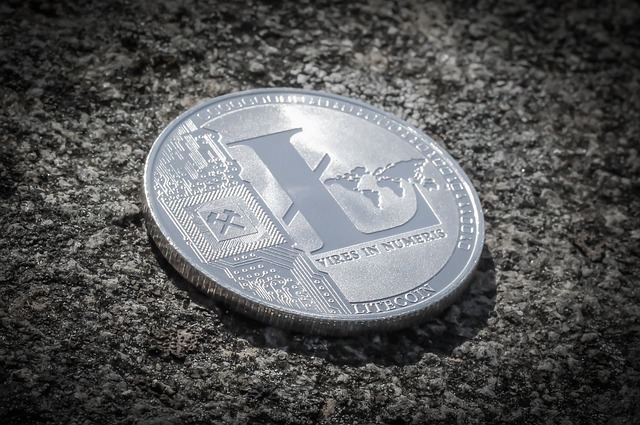Litecoin (LTC), launched in 2011, is a popular cryptocurrency known for its "digital silver" status compared to Bitcoin's "digital gold." It offers faster transactions and lower fees due to its Scrypt consensus mechanism and fixed supply cap of 84 million coins. Traders use Technical Analysis, employing indicators like Moving Averages (MA), Relative Strength Index (RSI), and Bollinger Bands, to predict price movements and identify trading opportunities. Litecoin markets exhibit recurring patterns that traders leverage for gains by recognizing trends and reversals using these tools. Effective risk management strategies, such as stop-loss orders and diversification, are crucial in the volatile crypto market. Advanced techniques like on-chain analytics and multi-timeframe analysis provide deeper insights, enabling investors to make more informed decisions in LTC markets.
Dive into the dynamic world of Litecoin trading with our comprehensive guide. Whether you’re a seasoned veteran or a curious beginner, this article unravels the intricacies of Litecoin, from its fundamentals to advanced techniques. We explore powerful technical analysis tools, uncover common trading patterns, and equip you with robust risk management strategies. Discover how to navigate the markets effectively and maximize your potential returns in the ever-evolving landscape of digital currencies, focusing solely on Litecoin.
- Understanding Litecoin: A Beginner's Guide to the Digital Currency
- Technical Analysis for Litecoin Trading: Key Indicators and Setups
- Common Trading Patterns in Litecoin Markets: Identifying Trends and Reversals
- Risk Management Strategies for Litecoin Traders: Protecting Your Investment
- Advanced Litecoin Trading Techniques: Expanding Your Tool Kit
Understanding Litecoin: A Beginner's Guide to the Digital Currency

Litecoin, often referred to as “digital silver” to Bitcoin’s “digital gold,” is a popular cryptocurrency that has been around since 2011. It was created by Charlie Lee, a former Google engineer, with the primary goal of offering faster transaction times and lower fees than its more well-known counterpart. Litecoin operates on a decentralized network, utilizing a different consensus mechanism known as Proof-of-Work (Scrypt), which makes it distinct from Bitcoin’s Proof-of-Work (SHA-256) algorithm. This difference in mining difficulty and block time contributes to Litecoin’s faster processing of transactions.
For beginners, understanding Litecoin involves grasping its core principles and unique features. The currency has a fixed supply cap of 84 million coins, which is lower than Bitcoin’s 21 million. This scarcity, combined with its rapid transaction confirmations, makes Litecoin an attractive option for peer-to-peer payments and as a store of value in the ever-evolving digital currency landscape. Its popularity has led to widespread adoption and numerous trading opportunities on various exchanges worldwide.
Technical Analysis for Litecoin Trading: Key Indicators and Setups

Technical Analysis is a powerful tool for Litecoin traders, offering insights into price movements and potential trends. Key indicators such as Moving Averages (MA), Relative Strength Index (RSI), and Bollinger Bands are widely used to identify litecoin trading setups. For instance, traders often employ MA crossovers to signal buying or selling pressure; when the 50-day MA crosses above the 200-day MA, it may indicate a bullish setup, prompting an upward trade.
Similarly, RSI oscillates between 0 and 100, helping identify overbought or oversold conditions. Traders watch for readings above 70 (overbought) or below 30 (oversold) to potential reverse trends. Bollinger Bands, consisting of a moving average with two standard deviation bands, provide volatility insights. Narrow bands suggest low volatility, while wide bands indicate high volatility, potentially signaling trend reversals when litecoin prices reach band extremes.
Common Trading Patterns in Litecoin Markets: Identifying Trends and Reversals

Litecoin markets, like any other cryptocurrency exchange, exhibit recurring trading patterns that traders can leverage for gains. Identifying trends and reversals is a crucial aspect of successful Litecoin trading strategies. Technical analysts often employ various tools such as moving averages, Relative Strength Index (RSI), and Bollinger Bands to gauge market sentiment and predict future price movements.
Trending uplitcoin prices are characterized by consistent higher highs and higher lows, while declining markets show a pattern of lower lows and lower highs. Traders look for support levels during downtrends and resistance levels during uptrends. Recognizing these patterns allows investors to make informed decisions on when to buy or sell Litecoin, ensuring they capitalize on the market’s natural oscillations.
Risk Management Strategies for Litecoin Traders: Protecting Your Investment

Litecoin traders, much like any other investor, need robust risk management strategies in their arsenal to protect their investments. This is crucial in the volatile cryptocurrency market where prices can swing dramatically within short periods. One of the primary goals should be to limit potential losses while aiming for significant gains. Traders can achieve this by employing various risk management techniques tailored to Litecoin trading.
Setting stop-loss orders is a fundamental strategy that allows traders to automatically exit positions if the market moves against them. This helps in cutting losses and protecting capital. Additionally, maintaining a diverse portfolio across different cryptocurrencies can serve as a risk mitigation measure. By not putting all their eggs in one basket, traders reduce exposure to any single asset’s volatility. Litecoin-specific risk management also involves keeping a close eye on news, regulatory changes, and market sentiment that could impact the cryptocurrency’s price dynamics.
Advanced Litecoin Trading Techniques: Expanding Your Tool Kit

In the dynamic world of cryptocurrency trading, advancing beyond basic strategies is crucial for mastering Litecoin (LTC) markets. Experienced traders often turn to advanced techniques that go beyond technical indicators and price patterns. One powerful approach is using on-chain analytics, which provides insights into network activity and demand. By analyzing metrics like transaction volumes, miner fees, and the distribution of coin ages, traders can predict potential price movements as these factors influence Litecoin’s supply and demand dynamics.
Another sophisticated technique involves combining multiple timeframes for analysis. This method allows traders to identify long-term trends while also spotting short-term reversals or continuations. For instance, a trader might observe a long-term upward trend on the yearly chart and then use smaller timeframes to pinpoint key support and resistance levels, enabling them to execute well-timed trades with improved accuracy. These advanced Litecoin trading techniques expand the tool kit of investors, contributing to more informed decisions and potentially higher returns in the volatile crypto market.
Litecoin, a pioneering cryptocurrency, offers traders a unique blend of technological innovation and market dynamics. This article has provided an in-depth exploration of various trading strategies, from understanding Litecoin’s fundamentals to mastering advanced technical setups and risk management techniques. By delving into key indicators, common patterns, and advanced techniques, traders can enhance their Litecoin trading experience. With the ever-evolving cryptocurrency landscape, staying informed and adopting effective strategies is crucial for navigating the markets successfully.







Leave a Reply